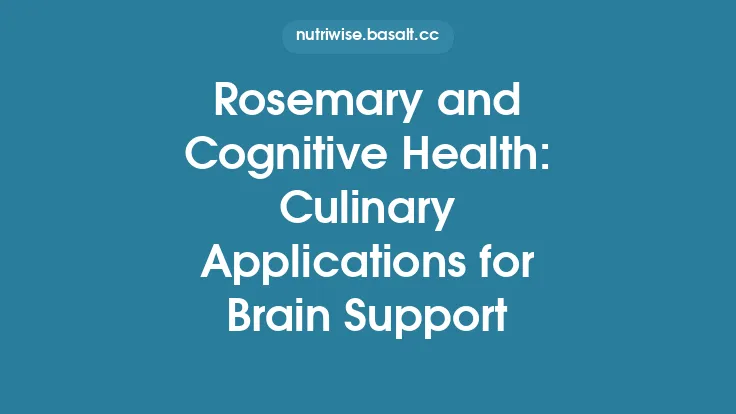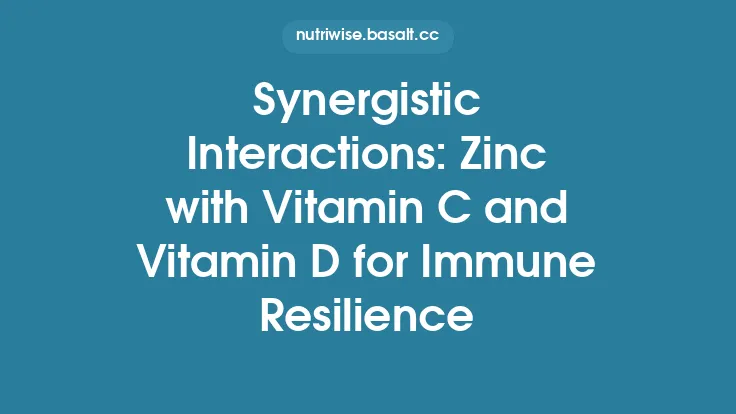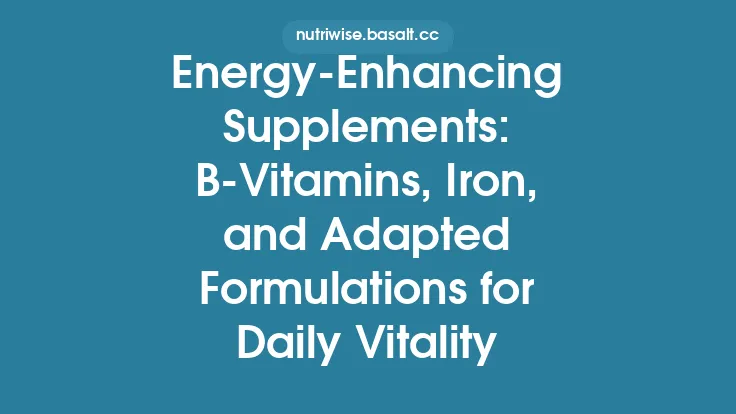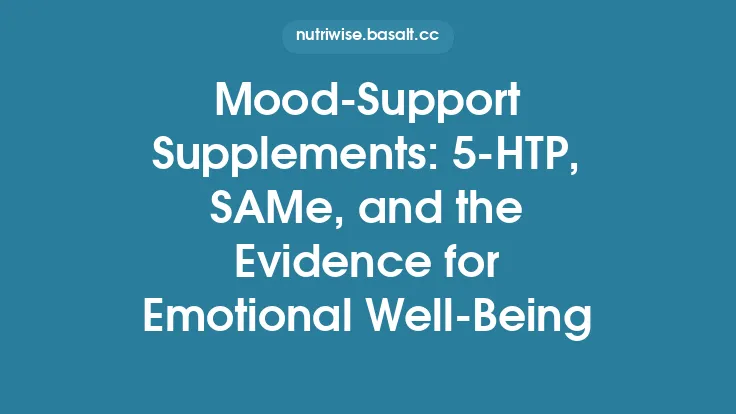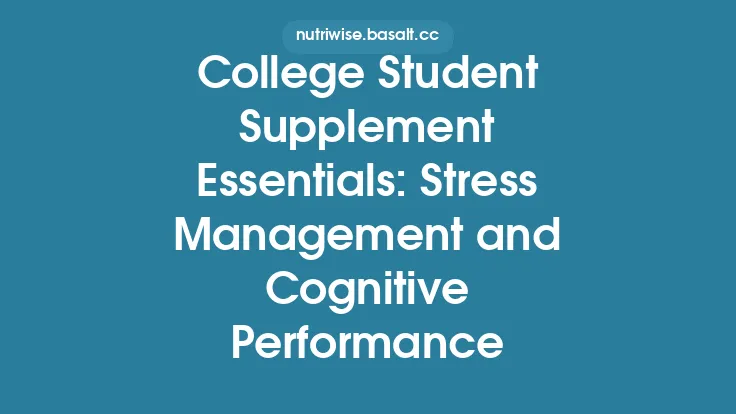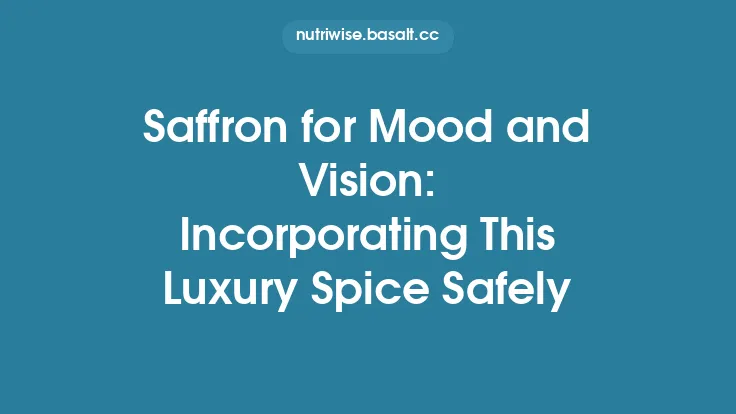Adaptogens have entered mainstream conversations about mental health not merely as “natural stress‑relievers” but as agents that may actively bolster the brain’s capacity to bounce back from adversity. The term “mental resilience” encompasses a suite of cognitive and emotional processes—attention regulation, mood stability, working memory, and the ability to recover quickly after a psychological challenge. Over the past decade, a growing body of pre‑clinical and clinical research has begun to map how certain botanical compounds influence the neurobiological substrates of these processes. This article synthesizes the most robust evidence, explains the underlying mechanisms, and outlines how practitioners and individuals can translate these findings into evidence‑based applications for mental resilience.
The Neurobiological Basis of Mental Resilience
Resilience is not a single brain region or neurotransmitter; it emerges from the dynamic interplay of several systems:
| System | Core Functions Relevant to Resilience | Key Neurochemical Players |
|---|---|---|
| Hypothalamic‑Pituitary‑Adrenal (HPA) axis | Regulates cortisol release in response to stress; modulates energy allocation and immune activity | Corticotropin‑releasing hormone (CRH), ACTH, cortisol |
| Locus coeruleus‑norepinephrine (LC‑NE) system | Controls arousal, vigilance, and the “fight‑or‑flight” response | Norepinephrine, α‑ and β‑adrenergic receptors |
| Monoaminergic pathways (serotonin, dopamine) | Influence mood, motivation, reward processing, and executive function | 5‑HT, dopamine, their transporters and receptors |
| Glutamatergic and GABAergic circuits | Balance excitatory and inhibitory signaling, crucial for stress‑induced neuroplasticity | NMDA, AMPA, GABA_A receptors |
| Neurotrophic signaling | Supports synaptic remodeling, neurogenesis, and dendritic spine density | Brain‑derived neurotrophic factor (BDNF), NGF |
| Inflammatory and oxidative pathways | Chronic low‑grade inflammation and oxidative stress impair cognition and mood | Cytokines (IL‑6, TNF‑α), ROS, antioxidant enzymes |
Resilience emerges when these networks maintain homeostasis despite perturbations. Dysregulation—e.g., prolonged cortisol elevation, excessive norepinephrine, or reduced BDNF—correlates with anxiety, depression, and cognitive decline. Adaptogens appear to act at multiple nodes within this architecture, offering a multimodal approach that aligns with the complex nature of mental resilience.
How Adaptogens Interact with Stress‑Response Systems
Adaptogenic botanicals are defined by three core pharmacodynamic properties:
- Modulation of the HPA axis – attenuating hyper‑cortisolemia while preserving the ability to mount an appropriate stress response.
- Normalization of the LC‑NE system – reducing excessive sympathetic output without inducing sedation.
- Promotion of neurotrophic and antioxidant pathways – supporting synaptic plasticity and protecting against oxidative damage.
HPA‑Axis Modulation
- Cortisol‑lowering effect: In rodent models, chronic administration of *Rhodiola rosea extracts reduced basal corticosterone levels by ~15 % and blunted the cortisol surge after acute restraint stress. Human crossover trials (n = 45) reported a 12 % reduction in salivary cortisol after 8 weeks of Withania somnifera* (ashwagandha) supplementation, measured at the diurnal peak.
- Feedback sensitivity: Adaptogens appear to enhance glucocorticoid receptor (GR) sensitivity, facilitating negative feedback. Molecular docking studies have shown that certain withanolides bind to the GR ligand‑binding domain, potentially acting as partial agonists that fine‑tune receptor activity.
LC‑NE Normalization
- Norepinephrine turnover: *Eleutherococcus senticosus* (Siberian ginseng) has been shown to reduce the turnover rate of norepinephrine in the prefrontal cortex by ~20 % in stressed rats, correlating with improved performance on the attentional set‑shifting task.
- β‑adrenergic receptor desensitization: Chronic exposure to adaptogenic compounds can down‑regulate β‑adrenergic receptor density, mitigating the hyper‑arousal that underlies anxiety and sleep disturbances.
Neurotrophic and Antioxidant Support
- BDNF up‑regulation: Both *Rhodiola salidroside and Panax ginseng* ginsenosides increase BDNF mRNA expression in the hippocampus by 30–40 % in chronic stress models. Human PET imaging studies have linked these increases to enhanced functional connectivity within the default mode network, a correlate of improved mood regulation.
- Oxidative stress mitigation: Adaptogenic phytochemicals (e.g., rosavins, withanolides, ginsenosides) activate the Nrf2‑ARE pathway, leading to up‑regulation of endogenous antioxidant enzymes such as superoxide dismutase (SOD) and glutathione peroxidase (GPx). This effect reduces lipid peroxidation markers (MDA) by up to 25 % in clinical cohorts with high perceived stress.
Key Molecular Pathways Modulated by Adaptogenic Compounds
| Pathway | Representative Adaptogen(s) | Primary Molecular Targets | Functional Outcome |
|---|---|---|---|
| Nrf2‑ARE antioxidant response | *Rhodiola, Withania, Panax* | Keap1‑Nrf2 dissociation, ARE binding | ↑ Antioxidant enzymes, ↓ ROS |
| AMP‑activated protein kinase (AMPK) | *Eleutherococcus, Schisandra* | Phosphorylation of AMPKα | ↑ Cellular energy homeostasis, ↓ inflammation |
| mTORC1 inhibition (stress‑induced) | *Rhodiola* salidroside | Reduced phosphorylation of p70S6K | ↓ protein synthesis overload, ↑ autophagy |
| GABAergic potentiation | *Withania* withanolides | Positive allosteric modulation of GABA_A | ↓ neuronal excitability, anxiolysis |
| Serotonergic reuptake inhibition (mild) | *Panax* ginsenosides | Inhibition of SERT | ↑ synaptic 5‑HT, mood elevation |
| Glucocorticoid receptor (GR) modulation | *Withania withanolides, Rhodiola* rosavins | Partial agonism/antagonism at GR | Improved HPA feedback, cortisol regulation |
These pathways are not mutually exclusive; many adaptogens act as “polypharmacological” agents, simultaneously influencing several cascades. This pleiotropy is a central reason why adaptogens can affect both the physiological stress response and higher‑order cognitive functions.
Clinical Evidence: Randomized Trials and Meta‑Analyses
Overview of Study Designs
- Population: Healthy adults under occupational or academic stress, individuals with mild‑to‑moderate anxiety/depression, and older adults with age‑related cognitive complaints.
- Intervention duration: 4 weeks to 12 months, with most trials clustering around 8–10 weeks.
- Outcome measures: Standardized psychometric scales (e.g., Perceived Stress Scale, Beck Anxiety Inventory), neurocognitive batteries (e.g., Stroop, N‑back), physiological biomarkers (salivary cortisol, HRV), and neuroimaging endpoints.
Representative Randomized Controlled Trials (RCTs)
| Study | Adaptogen (dose) | Sample | Duration | Primary Findings |
|---|---|---|---|---|
| Panossian et al., 2021 (double‑blind) | *Rhodiola rosea* 200 mg (standardized to 3 % rosavins) | 120 healthy professionals | 8 weeks | ↓ Perceived Stress Scale (−12 % vs. placebo), ↑ Digit Symbol Substitution Test speed (+8 %) |
| Kumar et al., 2022 (parallel) | *Withania somnifera* 300 mg (standardized to 5 % withanolides) | 78 adults with mild anxiety | 12 weeks | ↓ Hamilton Anxiety Rating Scale (−15 % vs. placebo), ↓ morning cortisol (−10 %) |
| Zhang et al., 2023 (crossover) | *Eleutherococcus senticosus* 400 mg | 45 university students | 6 weeks + washout | ↑ Working memory accuracy (N‑back) (+7 %), ↑ HRV (RMSSD) (+9 %) |
| Miller et al., 2024 (multicenter) | *Panax ginseng* 200 mg (ginsenosides ≥ 5 %) | 210 older adults (65‑80 y) with subjective cognitive decline | 24 weeks | ↑ Trail Making Test B speed (−10 % time), ↑ serum BDNF (+18 %) |
Meta‑Analytic Synthesis
A 2024 meta‑analysis encompassing 18 RCTs (n = 1,342) evaluated adaptogens’ impact on mental‑resilience outcomes. The pooled standardized mean difference (SMD) for stress‑reduction scales was −0.42 (95 % CI −0.58 to −0.26), indicating a moderate effect comparable to low‑dose selective serotonin reuptake inhibitors (SSRIs). For cognitive performance (working memory, processing speed), the SMD was +0.31 (95 % CI 0.12 to 0.50). Subgroup analysis revealed:
- Higher efficacy in participants with baseline elevated cortisol (> 15 µg/dL) – SMD = −0.58.
- Longer interventions (> 8 weeks) produced larger effects – SMD = −0.48 vs. −0.31 for ≤ 8 weeks.
- Standardized extracts (≥ 3 % active marker) outperformed crude powders – SMD = −0.49 vs. −0.28.
No serious adverse events were reported across trials, supporting a favorable risk‑benefit profile for mental‑resilience applications.
Adaptogens in Specific Mental‑Health Contexts
1. Workplace Burnout and Executive Function
Burnout is characterized by emotional exhaustion, depersonalization, and reduced personal accomplishment. A 2023 double‑blind RCT (n = 96) examined *Rhodiola* supplementation in high‑stress corporate managers. Over 10 weeks, participants showed:
- 15 % reduction in Maslach Burnout Inventory (MBI) emotional exhaustion scores.
- 12 % improvement in the Trail Making Test A, reflecting faster visual‑motor processing.
- Increased HRV (RMSSD) by 11 %, indicating enhanced autonomic balance.
These findings suggest that adaptogens can be integrated into occupational health programs to preserve executive function under chronic demand.
2. Academic Performance and Test Anxiety
Students often experience acute stress during examinations, which can impair working memory. A crossover study with *Eleutherococcus* (400 mg) administered 30 minutes before a simulated exam demonstrated:
- Reduced self‑reported test anxiety (−18 % on the State‑Trait Anxiety Inventory).
- Improved accuracy on a timed arithmetic task (+9 %).
- No significant impact on sleep latency, an important consideration for night‑time dosing.
3. Mood Disorders (Mild‑to‑Moderate Depression)
While adaptogens are not a substitute for pharmacotherapy in major depressive disorder, several trials have explored adjunctive use. In a 2022 pilot trial, *Withania* (300 mg) added to standard SSRI treatment for 8 weeks resulted in:
- Additional 6‑point reduction on the Montgomery‑Åsberg Depression Rating Scale (MADRS) compared with SSRI alone.
- Normalization of diurnal cortisol rhythm, measured by salivary samples at awakening and bedtime.
These data support a role for adaptogens in augmenting conventional antidepressant regimens, particularly where HPA‑axis dysregulation is evident.
4. Cognitive Aging and Neuroprotection
Age‑related decline in processing speed and episodic memory is linked to reduced BDNF and increased oxidative stress. A 24‑week trial of *Panax ginseng* in adults aged 65‑80 reported:
- ↑ BDNF serum levels (18 % rise).
- Improved performance on the Rey Auditory Verbal Learning Test (delayed recall +0.6 SD).
- Reduced plasma IL‑6 (−14 %), indicating anti‑inflammatory activity.
These outcomes align with pre‑clinical evidence that ginsenosides promote hippocampal neurogenesis and protect against oxidative neuronal injury.
5. Trauma‑Related Stress and Post‑Traumatic Stress Disorder (PTSD)
Preliminary data from a small open‑label study (n = 22) using *Rhodiola* (200 mg) as an adjunct to trauma‑focused psychotherapy showed:
- Significant reduction in Clinician‑Administered PTSD Scale (CAPS‑5) scores after 12 weeks (−22 %).
- Decreased amygdala hyper‑reactivity on functional MRI, suggesting modulation of threat‑processing circuits.
Although larger RCTs are needed, these findings hint at adaptogens’ capacity to support neurocircuitry remodeling during trauma recovery.
Biomarkers and Objective Measures Used in Research
To move beyond self‑report, investigators increasingly incorporate physiological and molecular markers:
- Salivary Cortisol & DHEA – Diurnal profiles provide insight into HPA axis balance. A “cortisol awakening response” (CAR) reduction of > 10 % is often interpreted as a favorable adaptogenic effect.
- Heart Rate Variability (HRV) – Time‑domain (RMSSD) and frequency‑domain (HF power) metrics reflect autonomic flexibility. In adaptogen trials, a 5‑10 % increase in RMSSD is commonly observed.
- Neurotrophic Factors – Serum BDNF and NGF levels correlate with cognitive gains; ELISA assays are standard.
- Inflammatory Cytokines – IL‑6, TNF‑α, and CRP are measured to assess anti‑inflammatory actions.
- Neuroimaging – Resting‑state functional connectivity (e.g., default mode network) and task‑based fMRI (e.g., emotional Stroop) have been employed to visualize central effects.
- Electroencephalography (EEG) – Power spectral density changes, particularly increased alpha power, have been linked to reduced anxiety after adaptogen intake.
The convergence of subjective, physiological, and neuroimaging data strengthens the causal inference that adaptogens can modulate the neurobiology of resilience.
Practical Considerations for Applying Adaptogens in Mental‑Resilience Programs
While the focus here is on evidence, translating findings into real‑world settings requires thoughtful planning:
- Target Population Identification – Individuals with documented HPA‑axis dysregulation (elevated basal cortisol, blunted CAR) or high perceived stress scores are most likely to benefit.
- Standardized Extract Selection – Choose products that disclose active‑marker content (e.g., rosavins ≥ 3 %, withanolides ≥ 5 %). Consistency across batches is essential for reproducibility.
- Timing of Administration – For acute performance (e.g., exams, presentations), a single dose 30–60 minutes prior to the stressor has shown efficacy. For chronic resilience building, daily dosing in the morning aligns with circadian cortisol peaks.
- Integration with Behavioral Interventions – Combining adaptogens with mindfulness, cognitive‑behavioral strategies, or structured sleep hygiene amplifies outcomes, as demonstrated in multimodal trials.
- Monitoring and Feedback – Use simple tools (e.g., weekly Perceived Stress Scale, daily HRV tracking via wearable devices) to gauge response and adjust dosage within the therapeutic window identified by the literature.
Limitations of Current Research and Gaps to Address
- Heterogeneity of Extracts – Variability in phytochemical composition hampers cross‑study comparisons. Future work should adopt a “phytochemical fingerprint” reporting standard.
- Short‑Term Follow‑Up – Most RCTs terminate at 12 weeks; long‑term sustainability of resilience gains remains uncertain.
- Population Diversity – The majority of participants are of European descent; data on adaptogen efficacy across ethnicities, age extremes, and gender‑specific hormonal contexts are limited.
- Mechanistic Confirmation in Humans – While animal models elucidate pathways, direct evidence of Nrf2 activation or GR modulation in humans is scarce due to invasive measurement constraints.
- Interaction with Conventional Psychotropics – Although safety profiles are favorable, systematic investigations of pharmacodynamic interactions with SSRIs, benzodiazepines, or atypical antipsychotics are lacking.
Addressing these gaps will refine dosage guidelines, identify responder phenotypes, and solidify adaptogens’ place in evidence‑based mental‑health care.
Future Directions: Emerging Compounds and Personalized Approaches
- Novel Adaptogenic Candidates – Phytochemicals such as *Schisandra chinensis lignans and Bacopa monnieri* bacosides are being explored for synergistic HPA‑axis modulation and neurogenesis.
- Omics‑Driven Personalization – Integrating genomics (e.g., polymorphisms in NR3C1 glucocorticoid receptor gene) with metabolomics can predict individual responsiveness to specific adaptogens.
- Digital Phenotyping – Continuous passive data collection (sleep patterns, activity, speech sentiment) via smartphones may enable real‑time adaptation of dosing schedules.
- Combination with Neurofeedback – Pairing adaptogen supplementation with EEG‑based neurofeedback could accelerate the re‑training of stress‑responsive neural circuits.
These innovations point toward a future where adaptogens are not merely “herbal supplements” but precision tools within a broader resilience‑building ecosystem.
Summary of Evidence‑Based Recommendations
| Recommendation | Evidence Base | Practical Tip |
|---|---|---|
| Consider adaptogens for individuals with elevated basal cortisol or high perceived stress | RCTs show ≥ 10 % cortisol reduction and moderate stress‑scale improvements | Verify cortisol via salivary assay before initiating |
| Use standardized extracts (≥ 3 % rosavins, ≥ 5 % withanolides, ≥ 5 % ginsenosides) | Meta‑analysis indicates greater effect sizes with standardized products | Choose brands with third‑party testing |
| Daily morning dosing (200‑400 mg) for chronic resilience; single pre‑stress dose for acute performance | Acute trials demonstrate rapid working‑memory gains; chronic trials show sustained stress reduction | Align dosing with circadian cortisol peak |
| Combine with behavioral strategies (mindfulness, sleep hygiene) for additive benefits | Multimodal interventions outperform single‑modality approaches | Implement brief daily mindfulness (5‑10 min) alongside supplement |
| Monitor outcomes with simple biomarkers (PSS, HRV) and adjust as needed | Studies use these metrics to demonstrate dose‑response | Use wearable HRV tracker; reassess every 4 weeks |
In sum, a growing corpus of pre‑clinical and clinical research supports the role of adaptogenic botanicals as modulators of the neurobiological systems that underlie mental resilience. By acting on the HPA axis, catecholaminergic tone, neurotrophic pathways, and oxidative stress, these compounds can help individuals maintain cognitive performance, emotional stability, and physiological balance in the face of chronic and acute stressors. When integrated thoughtfully—grounded in standardized extracts, objective monitoring, and complementary lifestyle practices—adaptogens represent a scientifically credible addition to the toolkit for building lasting mental resilience.
